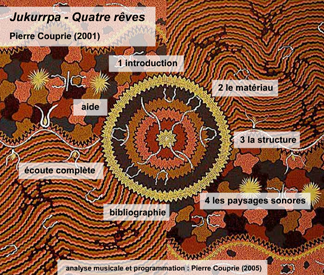Nous proposons une analyse hypermédia de l’opéra numérique en forme ouverte Alma Sola. Si le multimédia constitue un support attrayant pour évoquer les différentes composantes d’un opéra, nous nous sommes volontairement limité ici à l’informatique musicale et à ses relations à la composition. Nous avons donc laissé de côté à regret la création images et ses relations en temps réel avec la musique et le son ou l’analyse littéraire du livret. En revanche, pour approfondir la présentation de modules d’informatique musicale comme par exemple les modèles de Markov, nous proposons leur véritable mise en ligne, de telle sorte qu’ils puissent être utilisés et pas seulement simulés.
We propose an hypermedia analysis of the digital opera/open form Alma Sola. Though multimedia presentations are attractive supports to evoke the various components of an opera, we intentionally limited our analysis to music computing and its relationships to composition. We unfortunately left out image creation and its realtime relationships to music and sound or the litterary analysis of the libretto. On the contrary, to go further in the presentation of such music computing processes as Markov models, we created online versions, so that they can really be used and not only simulated.
Accéder à l’analyse



